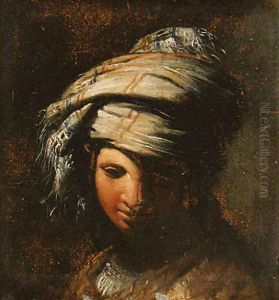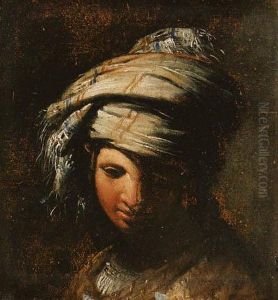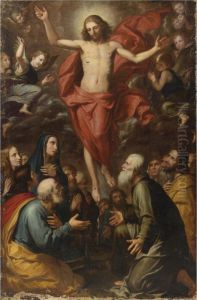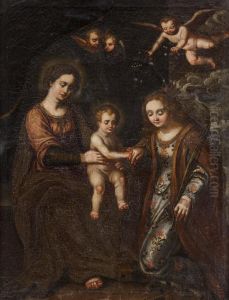Giovanni Bernardino Azzolino, Called Mazzolini Paintings
Giovanni Bernardino Azzolino, commonly referred to as Mazzolini, was an Italian painter of the Baroque period, born in 1572 in the region of Abruzzo. Little is documented about his early life and training, which was not uncommon for many artists of his time. However, it is known that his artistic journey was significantly influenced by the prevailing styles and movements of the period, particularly the dramatic intensity and emotional depth characteristic of Baroque art. Azzolino's works are noted for their vivid expression, dynamic compositions, and the skillful use of light and shadow, a technique known as chiaroscuro, which became a hallmark of Baroque painting.
Throughout his career, Azzolino developed a distinctive style that blended the naturalistic tendencies of the Baroque with his personal artistic vision. He excelled in religious subjects, imbuing his paintings with a sense of devotion and piety that resonated with the Counter-Reformation ideals prevalent in Italy at the time. His art served not only as a means of personal expression but also as a tool for the Catholic Church's efforts to communicate religious themes and narratives in a visually compelling manner.
Despite his contributions to the Baroque movement, Azzolino's work was somewhat overshadowed by that of his more famous contemporaries, such as Caravaggio and Annibale Carracci, whose innovations in the use of light and composition had a profound impact on the direction of Italian art. Nonetheless, Azzolino's paintings remain valuable for their artistic merit and for the insights they provide into the religious and cultural milieu of 17th-century Italy.
Azzolino's death in 1645 marked the end of a career that, while not as well-documented or celebrated as some of his peers, contributed to the rich tapestry of Baroque art. His legacy is preserved in churches and collections in Italy, where his works continue to be studied and appreciated for their beauty and historical significance. The scarcity of detailed records about Azzolino's life and work has posed challenges for art historians, but ongoing research and scholarship continue to shed light on his contributions to the Italian Baroque.



